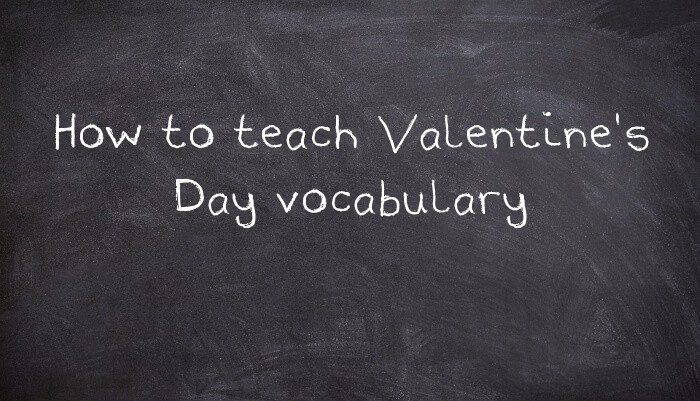Valentine’s Day is the next big special international day after Xmas and is becoming more and more popular in most countries. It is therefore an obvious topic to cover in February, but it can be difficult to bring into class without straying into taboo territory, and even more difficult to make a useful lesson out of. This article gives some tips on how to plan Valentine’s Day lessons while taking both of those things into account.
Preparing to teach a Valentine’s Day lesson
Before planning to teach Valentine’s Day vocabulary, you need to think about if that is really what you want to do. Most Valentine’s Day vocabulary rarely comes up in normal conversation. On the other hand, it is quite common in media such as rom-coms, gossip magazines, and news around the middle of February.
If the topic of Valentine’s is on your syllabus and/ or you think students would enjoy it but you are not sure how useful it is for them, one good approach is to widen the topic out, perhaps to love and relationships vocabulary like “split up with” or to life stages vocabulary like “graduation” and “mortgage”. As there are lots of phrasal verbs related to love and relationships, you could also make Valentine’s Day part of a more general lesson on multiword verbs.
The other approach is to combine the Valentine’s Day topic with other unrelated but useful language such as grammar. For example, a lesson on the next Valentine’s Day could be good practice of different future forms, or a lesson on “Valentine’s Day by numbers” could be a good way into pronouncing large numbers, fractions, etc.
The rest of this article concentrates on specific lessons on Valentine’s Day vocabulary, but other articles will follow on how to combine the topic with other subjects and language points.
How to present Valentine’s Day vocabulary
As mentioned above, the topic of Valentine’s Day is very common in the media. The best start is therefore probably an article, video clip, etc that students do comprehension and discussion tasks with, and then analyse for Valentine’s Day vocabulary. For example, students could rank an online article of Valentine’s Day tips by how romantic or not they are, match some of the words to definitions, then make similar tips for Mother’s Day, marriage proposals, engagement parties, etc. Similarly, they could match descriptions of Valentine’s Day to different countries, then make similar descriptions of other things in different places.
Most of the practice activities below could also be done from the beginning of the lesson.
How to practise Valentine’s Day vocabulary
Like love and relationships more generally, Valentine’s Day is not something we often talk about with people like classmates and colleagues. The usual system of students asking each other personal questions on the topic therefore doesn’t work well in this case. Two possible ways around this would be Valentine’s Day Ask and Tell, and Good and Taboo Valentine’s Day Questions.
In Valentine’s Day Ask and Tell, students can make any questions they like but they should be careful about getting too personal, because they then have to flip a coin to see if they can ask someone else that question (heads) or if they have to answer their own question (tails, for “tell”).
In Good and Taboo Valentine’s Day questions, students try to only ask each other okay questions like “Do prefer flowers or chocolates on Valentine’s Day?” whilst avoiding too personal questions like “Have you ever spent Valentine’s Day with an ex?” You can give them phrases like “I’d rather not say, if you don’t mind” to use if they think the question that they are asked is too personal.
For less personal speaking, students could ask each other about their opinions, for example with IELTS Speaking Part Three questions with the Valentine’s Day topic added to them like “How popular is Valentine’s Day in your country?”. They could ask each other theoretical questions like “What would you do if…?” Similarly, this is a good topic for giving advice, perhaps on situations you have prepared like “John and Jane only started dating at the end of January, so John is worried about going over the top on Valentine’s Day”. They could also debate two Valentine’s Day options like “Propose on Valentine’s Day/ Propose on another day in February” or “Flowers/ Chocolates”.
They could also use a list of vocabulary or vocabulary cards to make interesting stories about Valentine’s Day, perhaps starting with suggested first lines like “At 6 a.m. on February 14th, John suddenly realised that he hadn’t bought his wife anything for Valentine’s Day”.
A much simpler activity is for students to draw Valentine’s Day cards to follow instructions from their partners like “Draw one whole heart and one broken heart, with an arrow between them”.
Students can also mime, draw and/ or define words without saying the name until their partner guesses that they are explaining “Cupid”, “rose”, etc.
